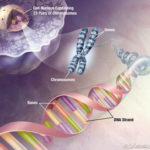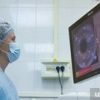Di Zazzo, Antonio MD*; Micera, Alessandra PhD†; Surico, Pier Luigi MD*; Balzamino, Bijorn Omar PhD†; Luccarelli, Vitaliana MD‡; Antonini, Marco MD*; Coassin, Marco MD, PhD*; Bonini, Stefano MD*
Cornea 43(3):p 295-300, March 2024. | DOI: 10.1097/ICO.0000000000003329
Abstract
Purpose:
Gastroesophageal reflux disease (GERD) and laryngopharyngeal reflux (LPR) are common gastrointestinal disorders with extraesophageal manifestations (EGERD). Studies showed a correlation between GERD/LPR and ocular discomfort. Our aim was to report the prevalence of ocular involvement in patients with GERD/LPR, describe clinical and biomolecular manifestations, and provide a treatment strategy for this novel EGERD comorbidity.
Methods:
Fifty-three patients with LPR and 25 healthy controls were enrolled in this masked randomized controlled study. Fifteen naive patients with LPR were treated with magnesium alginate eye drops and oral therapy (magnesium alginate and simethicone tablets) with a 1-month follow-up. Clinical ocular surface evaluation, Ocular Surface Disease Index questionnaire, tear sampling, and conjunctival imprints were performed. Tear pepsin levels were quantified by ELISA. Imprints were processed for human leukocyte antigen-DR isotype (HLA-DR) immunodetection and for HLA-DR, IL8, mucin 5AC (MUC5AC), nicotine adenine dinucleotide phosphate (NADPH), vasoactive intestinal peptide (VIP), and neuropeptide Y (NPY) transcript expression (PCR).
Results:
Patients with LPR had significantly increased Ocular Surface Disease Index (P < 0.05), reduced T-BUT (P < 0.05), and higher meibomian gland dysfunction (P < 0.001) compared with controls. After treatment, tear break-up time (T-BUT) and meibomian gland dysfunction scores improved to normal values. Pepsin concentration increased in patients with EGERD (P = 0.01) and decreased with topical treatment (P = 0.0025), significantly. HLA-DR, IL8, and NADPH transcripts were significantly increased in the untreated versus controls and comparable significant values were obtained after treatment (P < 0.05). MUC5AC expression significantly increased with treatment (P = 0.005). VIP transcripts were significantly higher in EGERD than in controls and decreased with the topical treatment (P < 0.05). No significant changes were observed in NPY.
Conclusions:
We report an increase in prevalence of ocular discomfort in patients with GERD/LPR. The observations of VIP and NPY transcripts demonstrate the potential neurogenic nature of the inflammatory state. Restoration of the ocular surface parameters suggests the potential usefulness of topical alginate therapy.
Origin of the article you can find here












